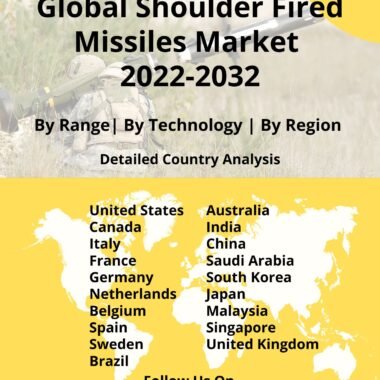Description
Global Mortar Ammunition Market
Mortar ammunition market plays a pivotal role in modern military operations, providing versatile and effective fire support for ground forces. Mortars, known for their high-arching trajectories, can deliver explosive power over obstacles, making them indispensable in complex terrains like urban landscapes and mountainous regions.
The most common types of mortar ammunition market trends include high-explosive (HE) rounds, smoke rounds, illumination rounds, and practice rounds. HE rounds are the backbone of mortar firepower, designed to destroy enemy personnel, light fortifications, and equipment. Smoke rounds create visual barriers, offering concealment for troop movements or marking enemy positions. Illumination rounds light up the battlefield during night operations, enhancing visibility and tactical awareness. Practice rounds, devoid of live explosives, are crucial for training, allowing troops to hone their skills safely.
Mortar ammunition market size come in various calibers, typically 60mm, 81mm, and 120mm, each serving distinct operational needs. Light mortars (60mm) are highly portable and ideal for quick, agile operations. Medium mortars (81mm) strike a balance between mobility and firepower, while heavy mortars (120mm) deliver significant destructive power, albeit with greater logistical demands.
Recent advancements have introduced guided mortar rounds, equipped with precision technology to enhance accuracy and effectiveness. These innovations are transforming mortar capabilities, making them more reliable and lethal.
Major factors driving Mortar Ammunition Market Growth
Increasing geopolitical tensions and conflicts around the world drive the demand for robust artillery capabilities. Nations facing regional conflicts or potential threats invest in Mortar ammunition market growth to bolster their defensive and offensive operations.
Many countries are undertaking military modernization programs to replace outdated artillery systems with modern, efficient alternatives. This includes upgrading mortar systems and their corresponding ammunition, which enhances operational capabilities and ensures compatibility with new technologies.
Mortar ammunition market reports are highly valued for their operational flexibility and ability to provide indirect fire support in various combat scenarios. Their effectiveness in urban warfare, counter-insurgency operations, and asymmetric warfare makes them indispensable for modern armies, driving continuous demand for mortar ammunition.
Trends influencing the Mortar Ammunition Market Size
The incorporation of advanced technologies into mortar ammunition is a significant trend. This includes the development of precision-guided munitions (PGMs) that use GPS and other guidance systems to improve accuracy and reduce collateral damage. These smart munitions enhance operational effectiveness, especially in urban and complex terrain.
There is a growing emphasis on developing lightweight and portable mortar systems and ammunition. This trend is driven by the need for rapid deployment and increased mobility in various combat scenarios, particularly for special operations and rapid reaction forces.
Modern mortar ammunition market forecast is being designed to offer enhanced lethality and extended range. Improvements in explosive materials and aerodynamics allow mortar rounds to hit targets more effectively from greater distances, providing tactical advantages in the field.
Mortar Ammunition Market Forecast & Dynamics
Geopolitical tensions, trade restrictions, and global events such as pandemics can disrupt the supply chain, affecting the availability and cost of raw materials and components. Maintaining and supporting advanced mortar systems and ammunition throughout their lifecycle can be expensive and logistically challenging. Opportunities exist in integrating emerging technologies such as artificial intelligence, machine learning, and advanced materials into mortar ammunition to enhance performance and operational effectiveness.
Mortar Ammunition Market Analysis for Recent Developments
Developments in propellant technology and aerodynamic design have led to mortar rounds capable of achieving greater ranges. This allows forces to engage targets from safer distances and cover larger areas. The 120mm Extended Range Mortar (ER-M) rounds, for example, have significantly increased the effective range of standard mortar systems. Modern mortar systems increasingly integrate with digital fire control systems, which automate targeting and firing processes. This development ensures quicker response times and improved accuracy. The integration of mortar ammunition with Network-Centric Warfare (NCW) systems allows for better coordination and real-time targeting data.
Key Companies




